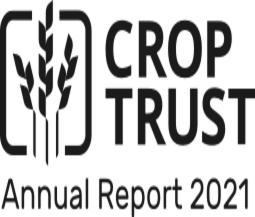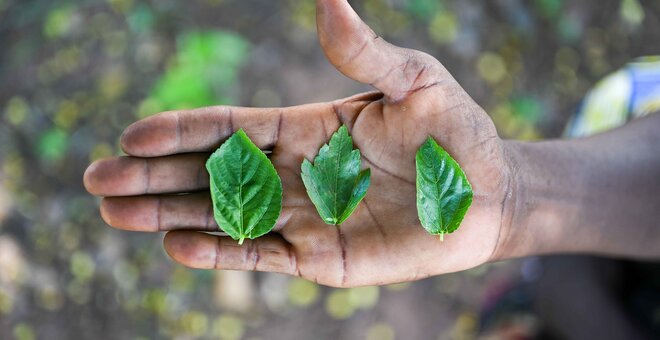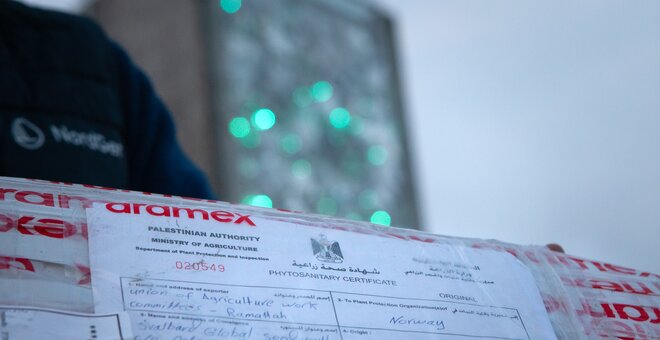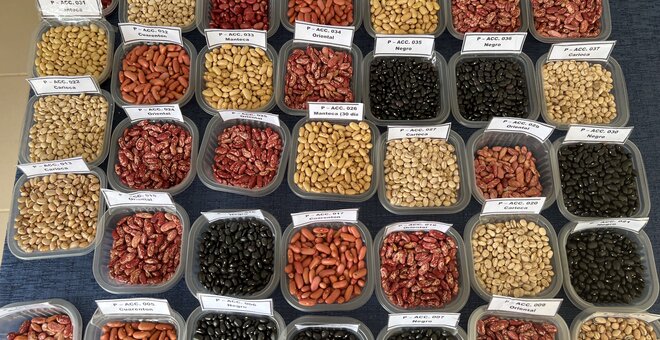The Svalbard Global Seed Vault
Twenty-two genebanks added nearly 51,000 seed samples to the Svalbard Global Seed Vault in 2021. This included two new depositors, the Genetic Resource Center, Latvia, and the Institute of Field and Vegetable Crops, Serbia. More than 30,000 samples were deposited at the June opening, the largest number of samples since February 2020, before the effects of the COVID-19 pandemic really hit. October saw the launch of a competitive grants scheme to support collection holders in low- and middle-income countries to regenerate their crop collections and duplicate them at the Seed Vault, and more than 60 proposals have been received.
At A Glance
The Svalbard Global Seed Vault is a long-term seed storage facility holding back-ups of the world’s collections of crop diversity. It is located deep inside a mountain on a remote island in the Svalbard archipelago near the North Pole and is opened a few times a year for deposits from genebanks all over the world.
The Seed Vault is established and owned by Norway and operated as a partnership between the Norwegian Ministry of Agriculture and Food, the Nordic Genetic Resource Center (NordGen) and the Crop Trust.
The Year in Numbers
22
genebanks sent seeds to the Seed Vault
2
new genebanks added to the Seed Vault depositor family
50,886
samples deposited
3
openings of the Seed Vault (February, June and October)
The Seed Vault in Numbers
1,125,419
seed samples safeguarded
5,840
species represented
89
depositing genebanks located in more than 60 countries worldwide
A Challenging Year
The COVID-19 pandemic made it a challenging year for those genebanks wanting to back up their collections to the Svalbard Global Seed Vault. Restrictions on the movement and assembly of people as a result of the pandemic constrained many genebank operations, including regeneration and multiplication of seeds in the field. But despite this, 22 genebanks managed to deposit a total of nearly 51,000 seeds in the Seed Vault in 2021. This included more than 30,000 seed samples lodged in the Seed Vault in June, the largest number of samples since February 2020, before the effects of the pandemic really hit. The largest single deposit, 11,771 seed samples, was made by the World Vegetable Center—another step in the genebank’s aim to have more than 90% of its collection duplicated and safely stored in the Seed Vault by 2025.
A Growing Family
October saw two new members join the Svalbard family: the Genetic Resource Center, Latvia, which deposited 153 samples of 30 different species, and the Institute of Field and Vegetable Crops, Serbia, which sent 96 samples, mostly of wheat species. The Serbian deposit was supported by the Benefit-sharing Fund of the International Treaty on Plant Genetic Resources for Food and Agriculture. Delegations from both genebanks attended, the first on-site delegates since the pandemic began.
“We are very happy to welcome these two new genebanks with this deposit. It is important to ensure a wide range of genetic diversity, so it is also gratifying that new species are entering the Seed Vault for the first time,” says Lise Lykke Steffensen, Director of NordGen.
Fruits and Vegetables Feature in Deposits
In keeping with 2021 being the FAO International Year of Fruits and Vegetables, the February deposit included seeds of watermelon and pumpkin from the SADC Plant Genetic Resources Center and wild strawberries from the Julius Kühn-Institute (JKI), Germany. This second deposit from JKI was also the first to include wild strawberries from its collection.
New Seed Portal Database
In 2020, NordGen introduced a new Seed Portal with an improved public interface. This offers enhanced search and new functionalities, such as updating data on depositor institutes and replacing older seed samples with fresh seeds when needed. In 2021, NordGen staff took the opportunity to correct many minor errors in the data managed by the system, such as typos. This involved a great deal of work but has added considerably to the quality of the data, and hence its usefulness.
Resounding Response to New Seed Conservation Grant
The October opening of the Svalbard Global Seed Vault coincided with the launch of a competitive grants scheme to support collection holders in low- and middle-income countries to regenerate their crop collections and duplicate them at the Seed Vault. This program, led by the Crop Trust in coordination with the Secretariat of the Plant Treaty and the Coordinator of the Svalbard Global Seed Vault (on behalf of the tripartite Svalbard Seed Vault partnership between NordGen, the Norwegian Ministry of Food and Agriculture and the Crop Trust), is aimed at broadening the representativeness of the collection in the Seed Vault, in particular by reaching out to universities, NGOs and community seed banks. It is part of the new BOLD Project and is funded by the Government of Norway.
The call attracted more than 60 proposals. Successful applicants are due to receive confirmation in early 2022.
Related news and resources
Celebration Meets Urgency at Latest Seed Vault Opening in Svalbard
LONGYEARBYEN, NORWAY, 22 October 2025 – Twenty genebanks representing every continent bar Antarctica deposited more than 21,000 seed samples to the Svalbard Global Seed Vault this week. Among them were new contributors from the...
22 Oct 2025
Svalbard Global Seed Vault Deposit - October 2025
The Svalbard Global Seed Vault opens its doors to receive a shipment of the world's crop diversity for the third time this year.
Members of the media are welcome to attend. To register, please contact media@croptrust.org.
21 Oct 2025
21 Oct 2025
ABC News Australia: Interview with Dr. Stefan Schmitz
In an interview with ABC in Australia, Dr. Stefan Schmitz of the Crop Trust sat down with Kath Sullivan to discuss how the Crop Trust continues the vital work of safeguarding global crop diversity. Dr. Schmitz emphasized the...
13 Apr 2025
The New York Times: The World’s Doomsday Plant Vault Gets Thousands of New Seeds
The world’s seed savers are racing to safeguard the world’s crop diversity in “the world’s doomsday garden shed,” writes Amelia Nierenberg in her The New York Times report of the final 2024 depositor event at the Svalbard Global...
29 Oct 2024
Bloomberg: Arctic Vault Stashes More Seeds for Future Food
As reported by Bloomberg, 23 depositors from 21 countries sent boxes of seeds that contain over 30,000 seed samples for safekeeping at the Svalbard Global Seed Vault in Norway. This underlines the urgent need to preserve crop...
25 Oct 2024
His Majesty King Charles III Continues Patronage of Crop Trust
June 3, 2024 – Bonn, Germany – The Crop Trust is delighted that, following a review of the patronages of the late Queen and the former Prince of Wales, His Majesty King Charles III has decided to continue to be its Patron....
3 Jun 2024











